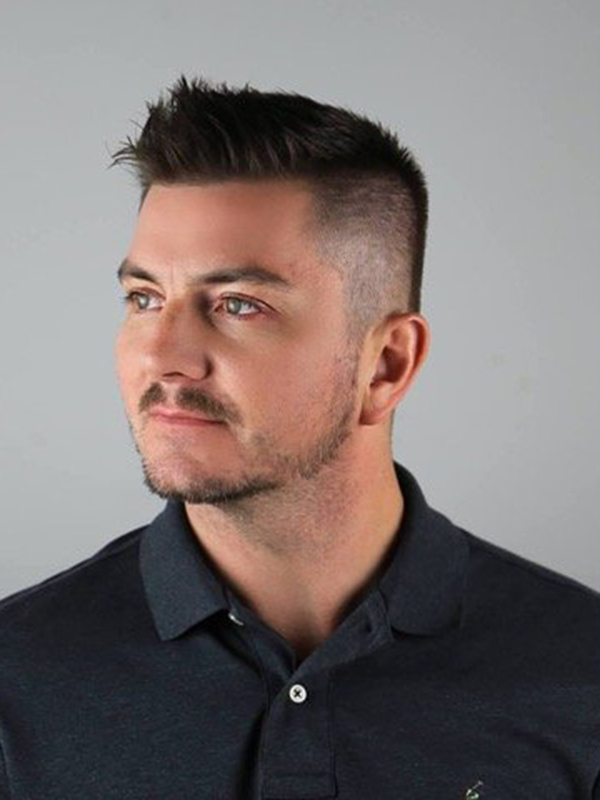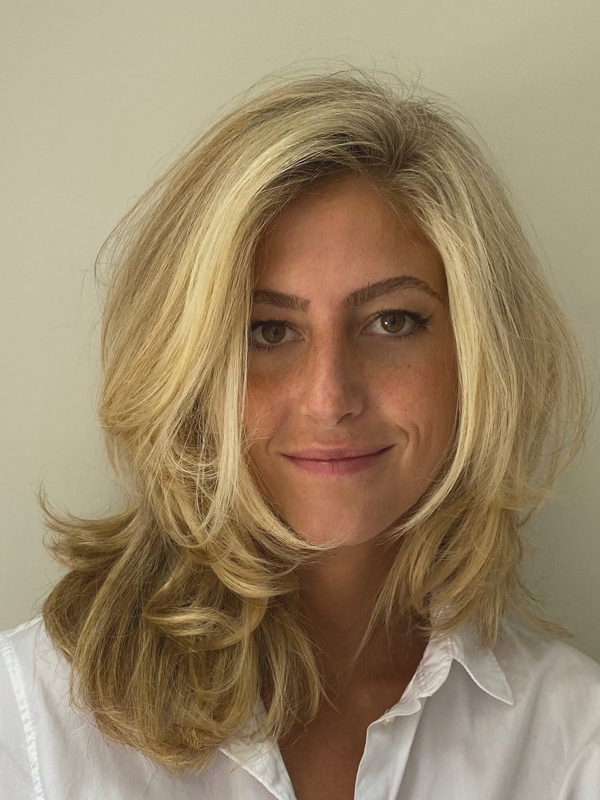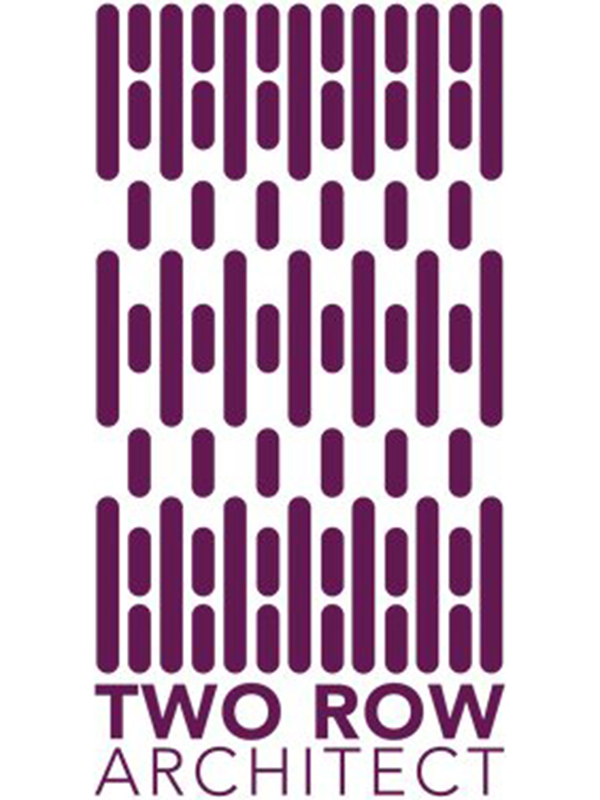Indigenous Ring
About The Ring
The university’s commitment to Truth and Reconciliation was apparent in their willingness to engage in a meaningful relationship-building process of listening and learning with our Indigenous community, which provided vital guidance to the creation of this important work… Jacqueline and I are very proud to have this public artwork placed on campus within Tkaronto [Toronto] as a reflection of the university’s understanding of the land on which we all stand.
Meet the designers
Matthew Hickey is a Mohawk architect from the Six Nations First Nation with over 12 years of experience working at Two Row Architect (external link) , an Indigenous-owned and operated architecture firm located on the Six Nations of the Grand River reserve. At the firm, he focuses on regenerative design – encompassing ecological, cultural and economic principles. Hickey’s research also includes Indigenous history and the adaptation of traditional sustainable technologies to the modern North American climate.

Jacqueline Daniel is an intern architect at Two Row Architect. She is a graduate of University of Michigan’s master of architecture program and holds a BA in architecture from the University of Toronto.

Two Row Architect is focused on guiding the realignment of mainstream ways of thinking on their journey towards Indigenous ways of knowing, being, design and architecture. The steel sculpture is one of a series of public art pieces at the university that will come to fruition throughout 2022.

Acknowledgements
Support for the ring was made possible by the university and the Lindy Green Family Charitable Foundation.
Frequently asked questions
The sculpture was designed by Matthew Hickey and Jacqueline Daniel of Two Row Architect (external link) . Two Row is an Indigenous-owned and operated firm located on the Six Nations of the Grand River reserve. The firm is focused on guiding the realignment of mainstream ways of thinking on their journey towards Indigenous ways of knowing, being, design and architecture.
Matthew Hickey, a Mohawk architect, focuses on Indigenous history and the adaptation of traditional sustainable technologies to the modern North American climate in his designs. He has over 12 years of experience working in an on-reserve architecture firm. Hickey’s focus is also on regenerative design – encompassing ecological, cultural and economic principles. His research includes Indigenous history and the adaptation of traditional sustainable technologies to the modern North American climate.
Jacqueline Daniel is an intern architect at Two Row and holds a Masters of Architecture from the University of Michigan.
The Ring was manufactured by Mariani Metal Fabricators (external link) in Etobicoke, Ontario. Mariani Metal is a family-owned, Canadian based company whose excellence in metal fabrication and design can be seen in projects across North America. Noteworthy projects include the New York Times Building, Toronto Pearson Airport Terminal 1, and the Art Gallery of Ontario.
The Ring’s graphics, made by small perforations, incorporate the Seven Grandparent teachings and their animal symbols: Humility, Courage, Honesty, Wisdom, Truth, Respect and Love. Passed down from generation to generation, First Nations communities have long referred to the Seven Grandparent teachings as a guide for their cultural foundation, human conduct and survival. Surrounded by stars and the constellation Pleiades, these pictographs also depict the lunar moon phases. The Ring is oriented with the cardinal directions so that the pathway through its void is facing east, representing creation and new beginnings, and west, representing knowledge and wisdom.
The design of the Ring is not connected to a specific Indigenous tradition. It does carry numerous attributes that will resonate with many Indigenous traditions, and is intended to show respect for all Indigenous ways in North America.
Some Indigenous cultures in North America were known to have developed metalurgic skills prior to European contact. The specific metal for the Ring - known as “Corten weathering steel” - is intended to represent a form of the material that is less processed and more likely to change and reflect its environmental conditions. The exterior has deliberately been left untreated, to allow the weathering process to continue.
Support for the sculpture was made possible by Toronto Metropolitan University and the Lindy Green Family Charitable Foundation.
The sculpture is located a few metres east of the Gould and Nelson Mandela Walk intersection, the two main pedestrian thoroughfares of Campus and opposite Devonian Pond. Over the last year and a half, the area has undergone renovations such as lighting improvements, curb removals and a significant increase in the campus’ tree canopy.
The intention behind the location of the sculpture was to place it in a high traffic and prominent location on campus where the university's staff, students and faculty and the greater community can experience, interact and learn about Indigenous culture, teaching and ways of knowing.
The exact location of the sculpture emerged from the thoughtful and ongoing work of the Toronto Metropolitan University’s Truth and Reconciliation Strategic Working Group in collaboration with members of the university’s Indigenous community, as well as Facilities Management and Development.
The Ring is oriented with the cardinal directions so that the pathway through its void is facing east, representing creation and new beginnings, and west, representing knowledge and wisdom.
Existing Indigenous public art installations on campus include:
- RASS Community Space
- Native American Indigenous Studies Association mural (SLC)
- Saagajiwe mural (external link) (RCC 2nd floor)
- YSGS mural (DCC 7th floor)
- In September 2020, the Toronto Metropolitan University Library unveiled a large-scale public artwork by photographer Nadya Kwandibens (external link) to commemorate the university’s engagement with the annual Native American Indigenous Studies Association (NAISA) (external link) conference.
- The Faculty of Communication and Design houses Saagajiwe (external link) , an Indigenous Communication and Creative Innovative Network. The mission of Saagajwe is to facilitate the creation and dissemination of Indigenous ways of knowing. Saagajiwe aspires to remove barriers and create opportunities for Indigenous youth to access language, education, traditional skills, culture, arts and knowledge.
- The Indigenous Fashion Support Program within FCAD is a virtual incubation program that supports Indigenous entrepreneurs to experience the journey of building or scaling a business in the fashion industry. With a focus on fashion, product and technology, the program enables participants to sharpen their entrepreneurial skills while developing real-life solutions.
- The XU Pow Wow (external link) is a student run community event, operating with the support of the Provost’s Office, Saagajiwe and many other RU leaders and departments. The XU Pow Wow honours Indigenous history and culture by facilitating workshops, panels and performances, as well as an Indigenous vendor market.
Toronto Metropolitan University has a number of supports available to Indigenous community members; a list can be found on Joanne Okimawininew Dallaire’s website. Supports include information regarding TMU’s Indigenous Education Council, TMU Indigenous Student Services, and the TMU Library’s Indigenous Research Portal.
To learn more about the university’s Land Acknowledgement, visit the Indigenous Education Council’s webpage.
The installation of the Ring is not associated with the Standing Strong (Mash Koh Wee Kah Pooh Win) Task Force’s recommendations. The plan for the Ring emerged from the thoughtful and ongoing work of the university’s Truth and Reconciliation Strategic Working Group in collaboration with members of the university’s Indigenous community, which began in 2018.
The Ring’s installation contributes to the fulfilment of one of the seven key initiatives outlined in the Community Consultation Summary Report, “Designate outdoor space for Indigenous ceremonies.” The Ring’s location is in a high-traffic and prominent location on campus where university staff, students and faculty, as well as members of the greater community, can experience, interact and learn more about Indigenous culture and teachings.
On August 26, 2021, President & Vice-Chancellor of the University Mohamed Lachemi announced that the Board of Governors approved a motion to accept all 22 recommendations of the Standing Strong Task Force’s report.
A recommendation in the report is for the university to develop an action plan by January 31, 2022, to address implementation of the Task Force’s recommendations. The university will honour that commitment and the community will hear more details in the coming weeks regarding next steps.







